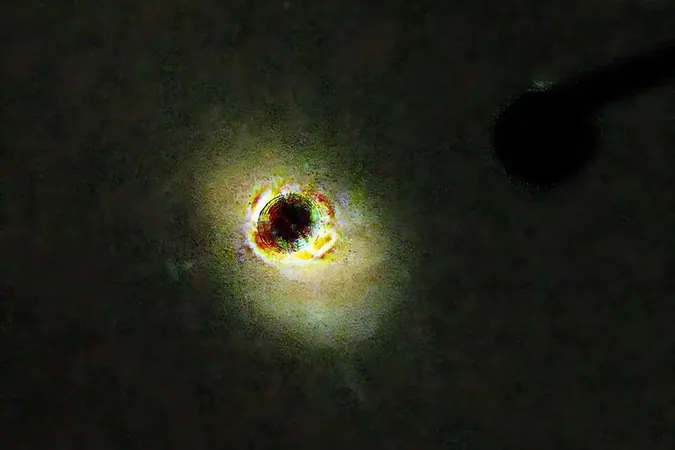
Hubble Unveils Stunning Secrets of the Colossal Quasar 3C 273
2025-04-12
Author: Wei
A Cosmic Revelation from Hubble
The Hubble Space Telescope has delivered an awe-inspiring, detailed glimpse into one of the universe's most remarkable phenomena: the quasar 3C 273. Situated over 2.5 billion light-years away, this discovery not only sheds light on the chaotic environment surrounding a supermassive black hole but also opens a new chapter in understanding how galaxies form and evolve.
Peering Into a Cosmic Engine
At the heart of 3C 273 lies a supermassive black hole feasting on nearby matter, producing the brilliant quasar that has intrigued astronomers since its discovery in 1963. Previous studies were often obscured by the overwhelming brightness of the quasar's core, but Hubble's Space Telescope Imaging Spectrograph (STIS) cleverly dimmed the luminous center, uncovering intricate and surprising features.
Mysterious Structures Emerge
Recent images from Hubble revealed various blobs of matter and an unusual L-shaped filament within a staggering 16,000 light-years of the black hole. Astrophysicist Bin Ren from the Côte d’Azur Observatory explained, "These features might represent satellite galaxies that are spiraling into the quasar's core." This intriguing possibility suggests that galactic cannibalism could play a significant role in quasar activation, prompting fresh insights into galaxy dynamics.
Jets of Cosmic Material
One of the most captivating discoveries is a gargantuan jet of material erupting from 3C 273, extending over 300,000 light-years—greater than the Milky Way's width! This jet, hurtling towards the speed of light and emitting energy across the electromagnetic spectrum, appears to accelerate as it traverses space. Comparisons with images from 22 years ago indicate its dynamic nature, hinting at interactions with intergalactic matter or hidden forces.
Redefining Quasars
Historically, quasars were viewed as solitary sources of light. However, Hubble's high-resolution images have transformed that understanding, illustrating that quasars are complex entities nestled within active galaxies undergoing monumental changes—through mergers, collapses, and tidal chaos. The once-isolated bright core of 3C 273 now reveals a broader narrative about galactic evolution and the tumultuous relationship between black holes and their galaxies.
Looking Ahead with James Webb
As astronomers aim to probe even deeper into the mysteries of quasars, the James Webb Space Telescope is poised to take center stage. With its infrared capabilities, it could delve into the dense, dust-filled regions surrounding black holes, uncovering star formation sites and how galaxies funnel material inward. These future observations, combined with Hubble’s pioneering data, promise to enhance our grasp of quasar structures and their monumental impact on the early universe.

 Brasil (PT)
Brasil (PT)
 Canada (EN)
Canada (EN)
 Chile (ES)
Chile (ES)
 Česko (CS)
Česko (CS)
 대한민국 (KO)
대한민국 (KO)
 España (ES)
España (ES)
 France (FR)
France (FR)
 Hong Kong (EN)
Hong Kong (EN)
 Italia (IT)
Italia (IT)
 日本 (JA)
日本 (JA)
 Magyarország (HU)
Magyarország (HU)
 Norge (NO)
Norge (NO)
 Polska (PL)
Polska (PL)
 Schweiz (DE)
Schweiz (DE)
 Singapore (EN)
Singapore (EN)
 Sverige (SV)
Sverige (SV)
 Suomi (FI)
Suomi (FI)
 Türkiye (TR)
Türkiye (TR)
 الإمارات العربية المتحدة (AR)
الإمارات العربية المتحدة (AR)